Part 3: PSX Interlude 1
1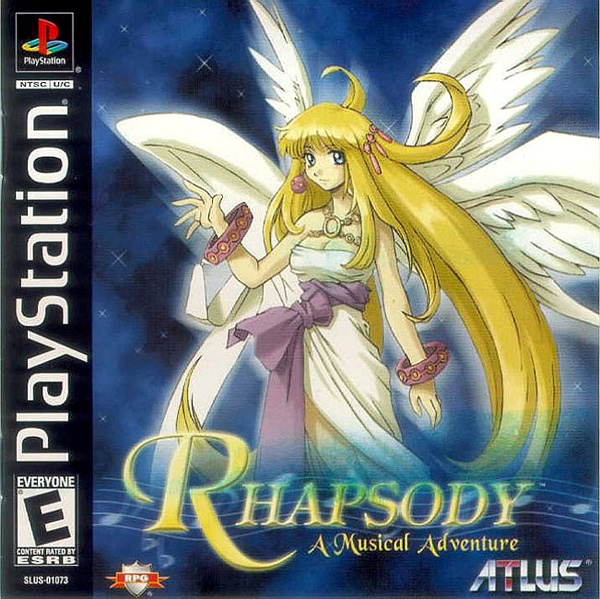
There are some pretty big changes between the two versions of the game, and some small inconsequential ones. Most of the ones that become apparent in the prologue are, well, small inconsequential ones. Most of the ones that don't pertain to bonus content are small inconsequential ones for that matter.
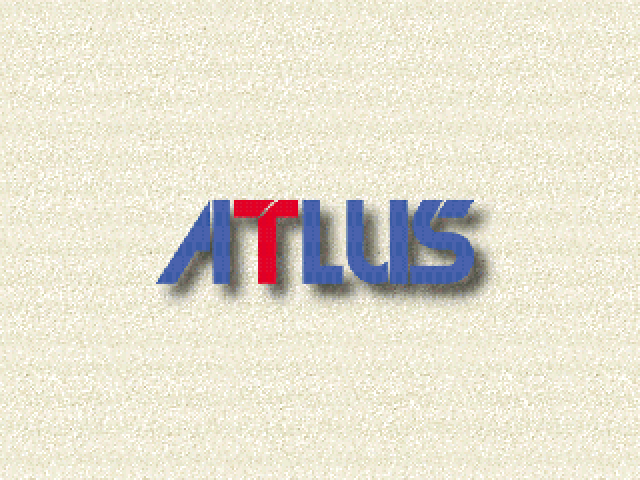
The first change, is the publisher. The DS version was published by NIS everywhere, but the North American release of the PSX version was published by Atlus.
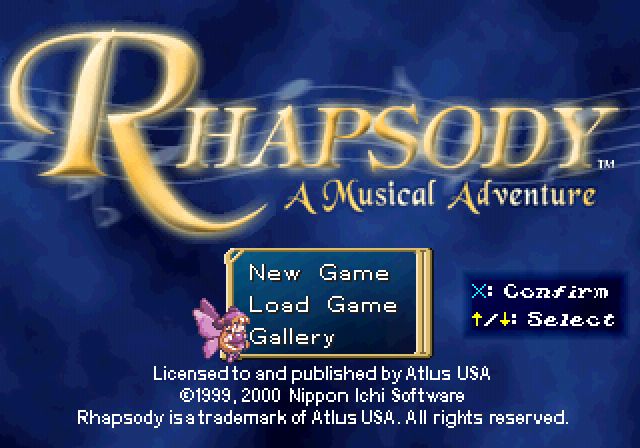
The title screen is a wee bit different between the two versions as well. They have, roughly, the same amount of content but in different ways. "Gallery" here was replaced by both "Encore" and "Observations" in the DS version; Encore consists of a little over half of the Gallery, whereas Observations consists of little descriptions of every major character, every monster and every Puppet.
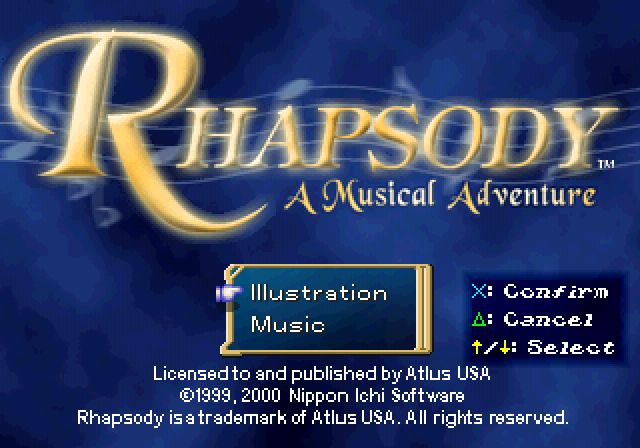
The Gallery consists of two things you'd probably expect; Illustrations, which aren't concept art, and the Musical segments. Just the Musical segments. Even then, not all of them; only the ones on the OST. Cornet's song in the Wonder Woods which is optional, for example, isn't in there... but it is in the DS version. Also, unlike the DS' Encore menu, the Music area lists every song by name rather than only revealing them when you see them in-game.
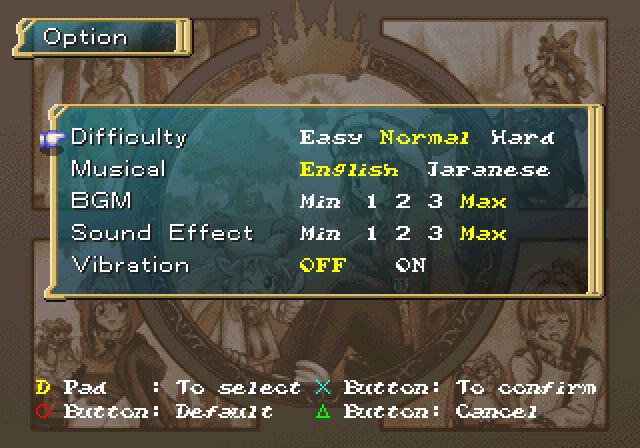
There's two apparent differences here; English singing and difficulty levels. The prior is painfully obvious, so let's just focus on the three difficulty levels; they don't affect how hard the game actually is. All they affect is how much EXP and Inotium you get after a battle. Hard gives the same EXP as the DS version, but more Inotium. Normal and Easy give more of both.
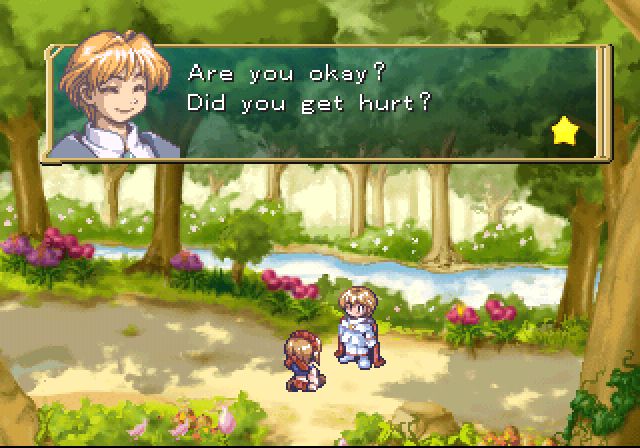
As for the actual game itself, there's obviously going to be some graphical differences between the two. One of which being the portraits; they look worse here, in my opinion. This isn't based on the art style differences. I just think they look better on the DS.
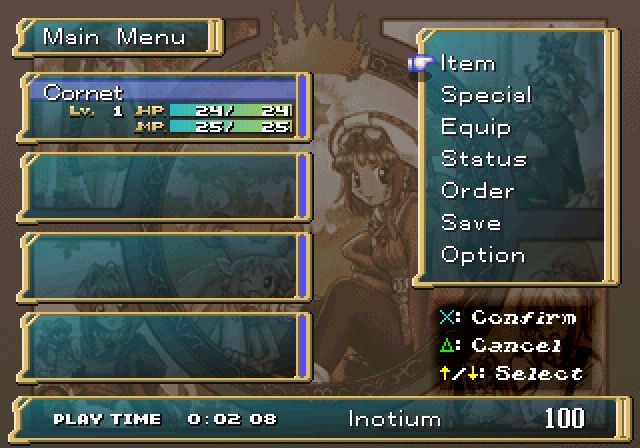
When it comes to the actual gameplay, one pretty big difference is noticable right away and will throw you if you played the DS version first or are just more used to it: Kururu isn't a playable character in the PSX version.
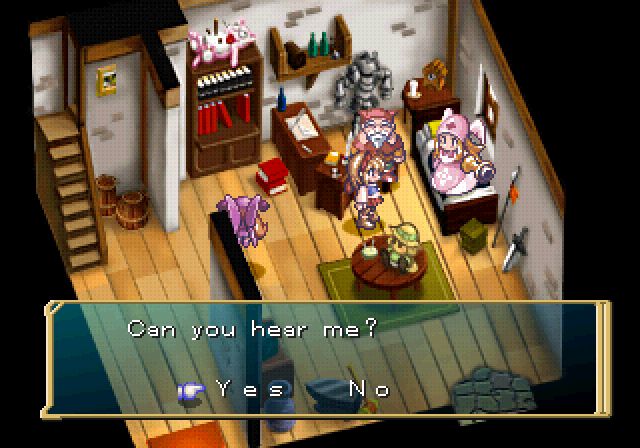
Oh, and some characters (mainly puppets) don't have portraits in the PSX version.

Sharte is automaticaly added to the party in the PSX version without having to manually re-arrange with the Order option. Also Cornet and Sharte have less HP; they both have 40 at level 1 in the DS version as opposed to the 24 here.
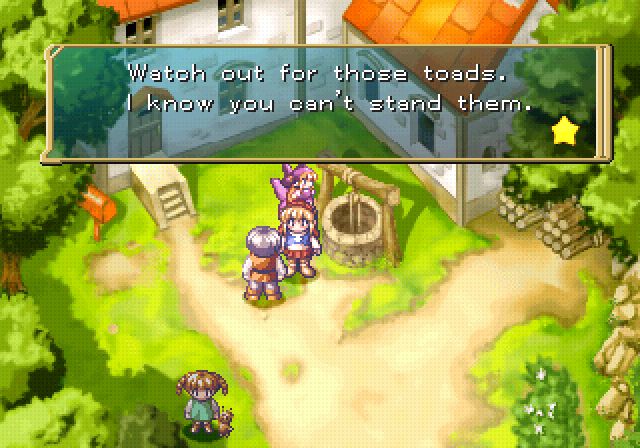
This guy by the well outside Cornet's house was removed from the DS version. That's a pretty minor thing to remove and it just makes you wonder why.
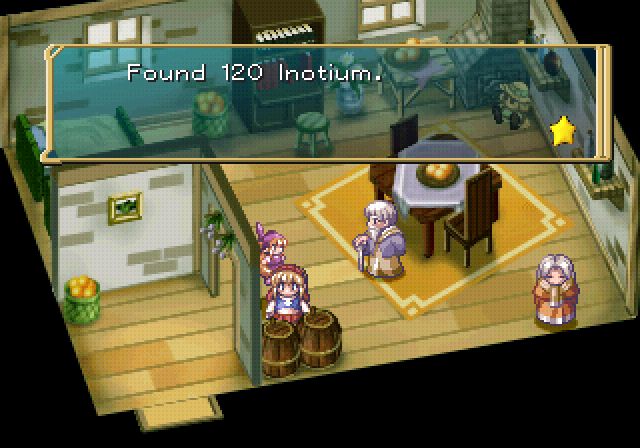
This cache of money, in the house that had the guide book in the DS version, was also removed. I'm not entirely sure why that one was done either. Speaking of the guide book on the shelf, though, that was actually added to the DS pot.
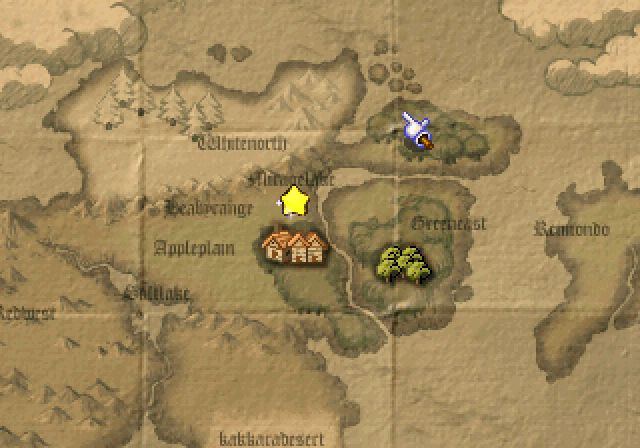
On the world map, new locations don't tell you they are new here. That's something.
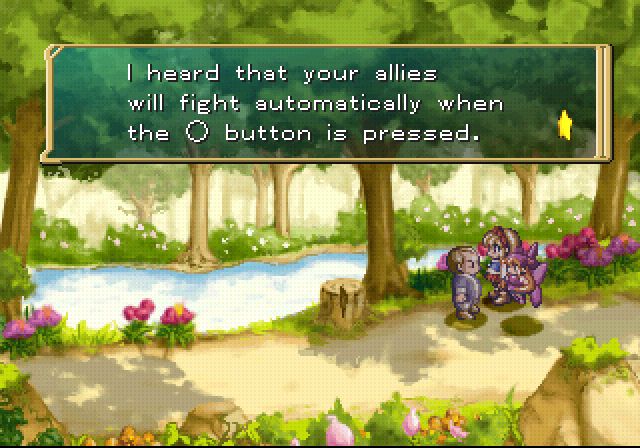
This guy was removed from the DS port as well. Likely because his one function of telling you how to auto-battle was changed to be a giant button that you click once. Here you have to press it every single turn to get that one turn automated.
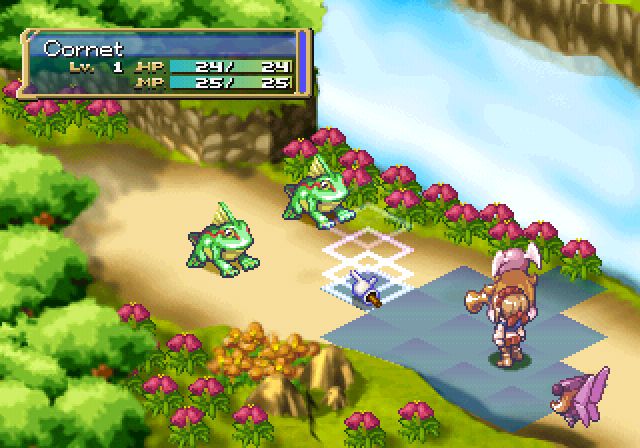
Now here's the biggest and most obvious change of all: the battle system. In the DS port, the entire system was overhauled to be a simpler turn based system so as to streamline random encounters etc. but here? The game was a Strategy RPG originally; this didn't make fights any harder/easier. It just made them take a bit longer. Also, Cornet's Horn just does one thing here: grant a Power increase to one puppet, and one puppet only. It doesn't cost SP to use though.
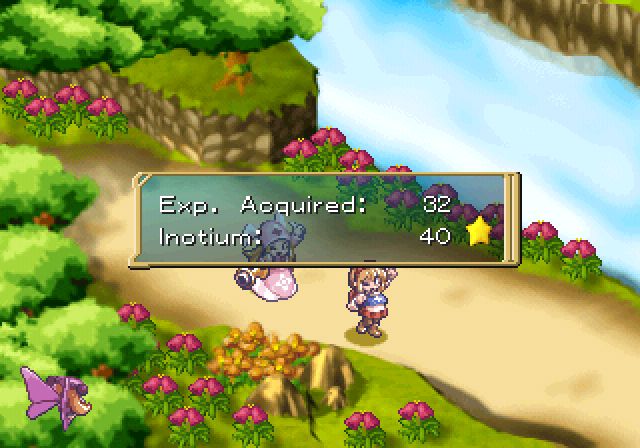
Normal gives twice as much EXP and Inotium as Hard. This works out as being enough to level up on the first fight for both Cornet and Sharte. They'll only level up on Easy and Normal after this fight though.


Kururu's spiel near the end of the prologue only takes two text boxes here instead of three... even though it's pretty much word-for-word identical and they can contain the same number of lines etc.
Anything I'm forgetting?
...Oh, English singing. Right.
The English voice actors used are actual singers which is kind of cool actually. It doesn't stop it from being cheesy as hell, though.